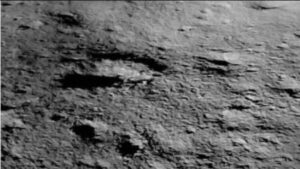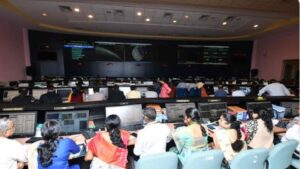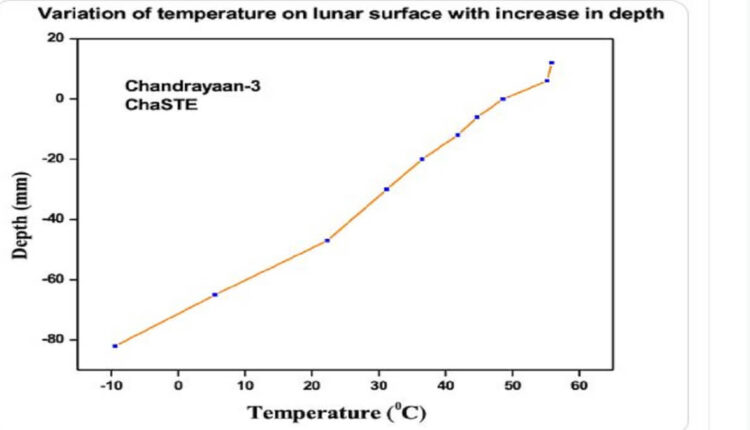Chandrayana 3 big update: Vikram Lander sends moon soil temperature
Sharing a graph with the update, ISRO said: “The presented graph illustrates the temperature variations of the lunar surface/near-surface at various depths, as recorded during the probe's penetration.
Indian Space Research Organisation (ISRO) on Sunday said that the Chandra’s Surface Thermophysical Experiment (ChaSTE) payload on Vikram, the Chandrayaan-3 lander, has measured the temperature profile of the lunar topsoil around the pole, to understand the thermal behaviour of the moon’s surface.
Sharing a graph with the update, Isro said: “The presented graph illustrates the temperature variations of the lunar surface/near-surface at various depths, as recorded during the probe’s penetration. ISRO shared a graph on the variation of the moon’s soil temperature at various depths. “ChaSTE (Chandra’s Surface Thermophysical Experiment) measures the temperature profile of the lunar topsoil around the pole, to understand the thermal behaviour of the moon’s surface.

It has a temperature probe equipped with a controlled penetration mechanism capable of reaching a depth of 10 cm beneath the surface. The probe is fitted with 10 individual temperature sensors,” it said. “The presented graph illustrates the temperature variations of the lunar surface/near-surface at various depths, as recorded during the probe’s penetration. This is the first such profile for the lunar south pole. Detailed observations are underway,” ISRO tweeted.
https://twitter.com/isro/status/1695725102166671448

In the graph, the temperatures range from -10 degree Celsius to 60 degree celsius. Chandrayaan 3 has seven payloads, four on the Vikram lander, two on the Pragyan rover and one propulsion module payload. These payloads are designed to carry out different scientific experiments.
Apart from ChaSTE which is studying lunar soil, Vikram has RAMBHA (to study ions and electrons), ILSA (to study the seismicity) and LRA (to understand the dynamics of moon’s system). After the failure of Chandrayaan 2 in 2019, India made history with its successful soft-landing on the south pole of the moon on August 23.
Also Read: VVS Laxman, Hrishikesh Kanitkar Appointed As Head Coach For Men’s And Women’s Team
Chandrayaan 3 has 14 days of time on the moon to complete its assignments and 14 days on the earth is equivalent to one lunar day. Rover Pragyan rolled out of Vikram lander and walked around the site where it landed, now known as Shiv Shakti Point. Now the payloads are all doing their work.


Comments are closed.